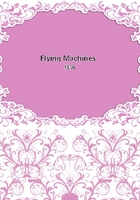
第15章
These instances show forcefully the wide diversity of opinion existing among experienced aviators as to the best manner of placing the rudders and stabilizing, or auxiliary planes, and make manifest how hopeless would be the task of attempting to select any one form and advise its exclusive use.
Rudder and Auxiliary Construction.
The material used in the construction of the rudders and auxiliary planes is the same as that used in the main planes--spruce for the framework and some kind of rubberized or varnished cloth for the covering. The frames are joined and wired in exactly the same manner as the frames of the main planes, the purpose being to secure the same strength and rigidity. Dimensions of the various parts depend upon the plan adopted and the size of the main plane.
No details as to exact dimensions of these rudders and auxiliary planes are obtainable. The various builders, while willing enough to supply data as to the general measurements, weight, power, etc., of their machines, appear to have overlooked the details of the auxiliary parts, thinking, perhaps, that these were of no particular import to the general public. In the Wright machine, the rear horizontal and front vertical rudders may be set down as being about one-quarter (probably a little less)the size of the main supporting planes.
Arrangement of Alighting Gear.
Most modern machines are equipped with an alighting gear, which not only serves to protect the machine and aviator from shock or injury in touching the ground, but also aids in getting under headway. All the leading makes, with the exception of the Wright, are furnished with a frame carrying from two to five pneumatic rubber-tired bicycle wheels. In the Curtiss and Voisin machines one wheel is placed in front and two in the rear. In the Bleriot and other prominent machines the reverse is the rule--two wheels in front and one in the rear. Farman makes use of five wheels, one in the, extreme rear, and four, arranged in pairs, a little to the front of the center of the main lower plane.
In place of wheels the Wright machine is equipped with a skid-like device consisting of two long beams attached to the lower plane by stanchions and curving up far in front, so as to act as supports to the horizontal rudder.
Why Wood Is Favored.
A frequently asked question is: "Why is not aluminum, or some similar metal, substituted for wood."Wood, particularly spruce, is preferred because, weight considered, it is much stronger than aluminum, and this is the lightest of all metals. In this connection the following table will be of interest:
Compressive Weight Tensile Strength Strength per cubic foot per sq. inch per sq. inch Material in lbs. in lbs. in lbs.
Spruce . . . . 25 8,000 5,000Aluminum 162 16,000 ......
Brass (sheet) 510 23,000 12,000Steel (tool) 490 100,000 40,000Copper (sheet) 548 30,000 40,000As extreme lightness, combined with strength, especially tensile strength, is the great essential in flying-machine construction, it can be readily seen that the use of metal, even aluminum, for the framework, is prohibited by its weight. While aluminum has double the strength of spruce wood it is vastly heavier, and thus the advantage it has in strength is overbalanced many times by its weight. The specific gravity of aluminum is 2.50; that of spruce is only 0.403.
Things to Be Considered.
In laying out plans for a flying machine there are five important points which should be settled upon before the actual work of construction is started. These are:
First--Approximate weight of the machine when finished and equipped.
Second--Area of the supporting surface required.
Third--Amount of power that will be necessary to secure the desired speed and lifting capacity.
Fourth--Exact dimensions of the main framework and of the auxiliary parts.
Fifth--Size, speed and character of the propeller.
In deciding upon these it will be well to take into consideration the experience of expert aviators regarding these features as given elsewhere. (See Chapter X.)Estimating the Weights Involved.
In fixing upon the probable approximate weight in advance of construction much, of course, must be assumed.
This means that it will be a matter of advance estimating. If a two-passenger machine is to be built we will start by assuming the maximum combined weight of the two people to be 350 pounds. Most of the professional aviators are lighter than this. Taking the medium between the weights of the Curtiss and Wright machines we have a net average of 850 pounds for the framework, motor, propeller, etc. This, with the two passengers, amounts to 1,190 pounds. As the machines quoted are in successful operation it will be reasonable to assume that this will be a safe basis to operate on.
What the Novice Must Avoid.
This does not mean, however, that it will be safe to follow these weights exactly in construction, but that they will serve merely as a basis to start from. Because an expert can turn out a machine, thoroughly equipped, of 850 pounds weight, it does not follow that a novice can do the same thing. The expert's work is the result of years of experience, and he has learned how to construct frames and motor plants of the utmost lightness and strength.
It will be safer for the novice to assume that he can not duplicate the work of such men as Wright and Curtiss without adding materially to the gross weight of the framework and equipment minus passengers.
How to Distribute the Weight.
Let us take 1,030 pounds as the net weight of the machine as against the same average in the Wright and Curtiss machines. Now comes the question of distributing this weight between the framework, motor, and other equipment. As a general proposition the framework should weigh about twice as much as the complete power plant (this is for amateur work).